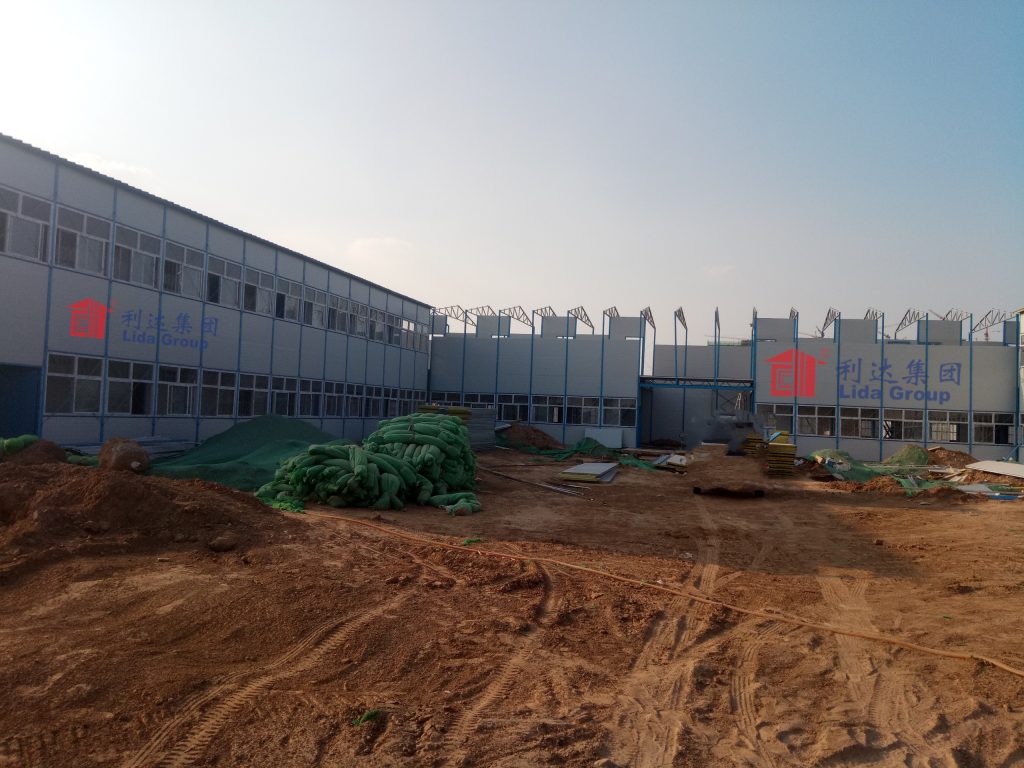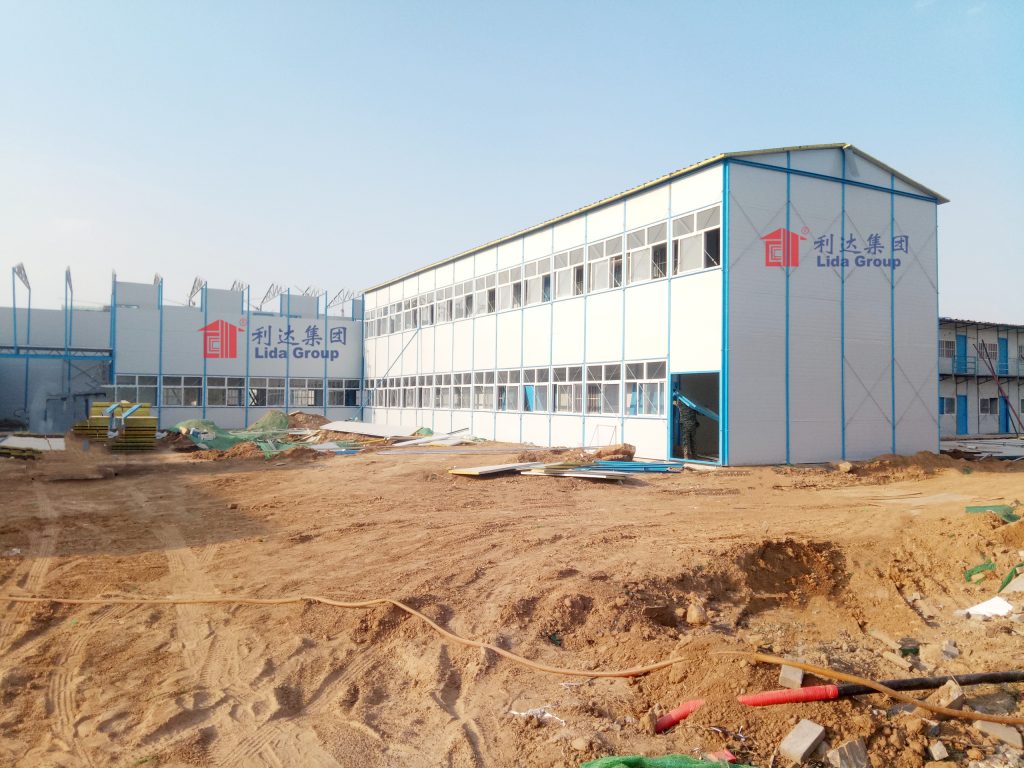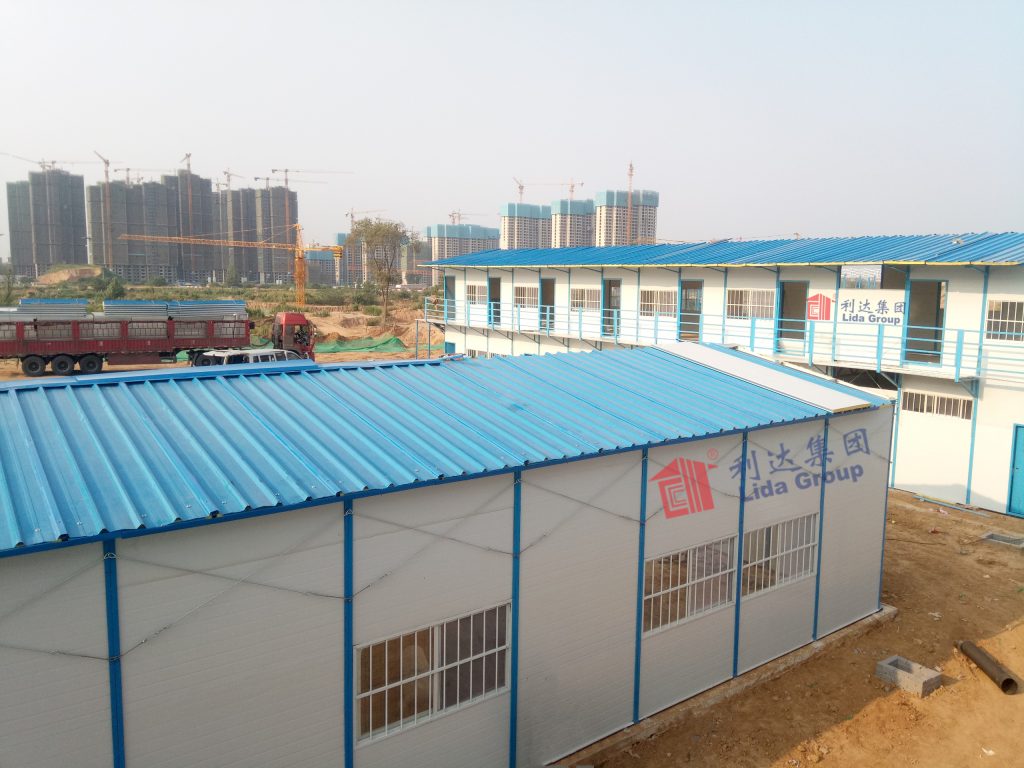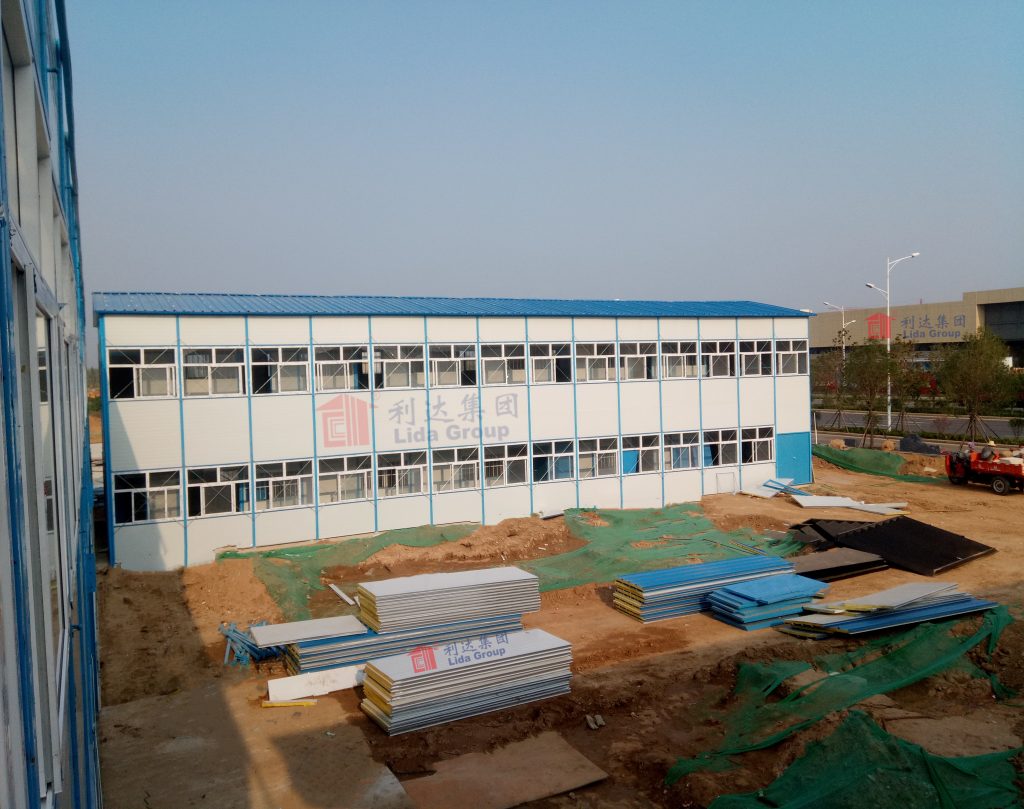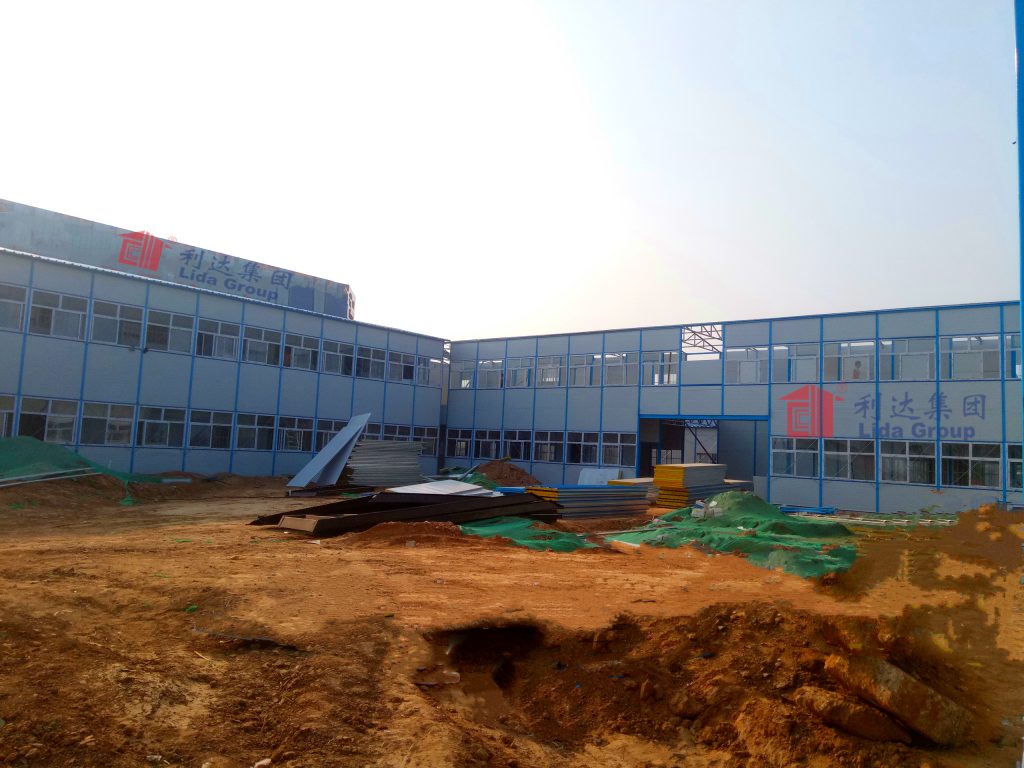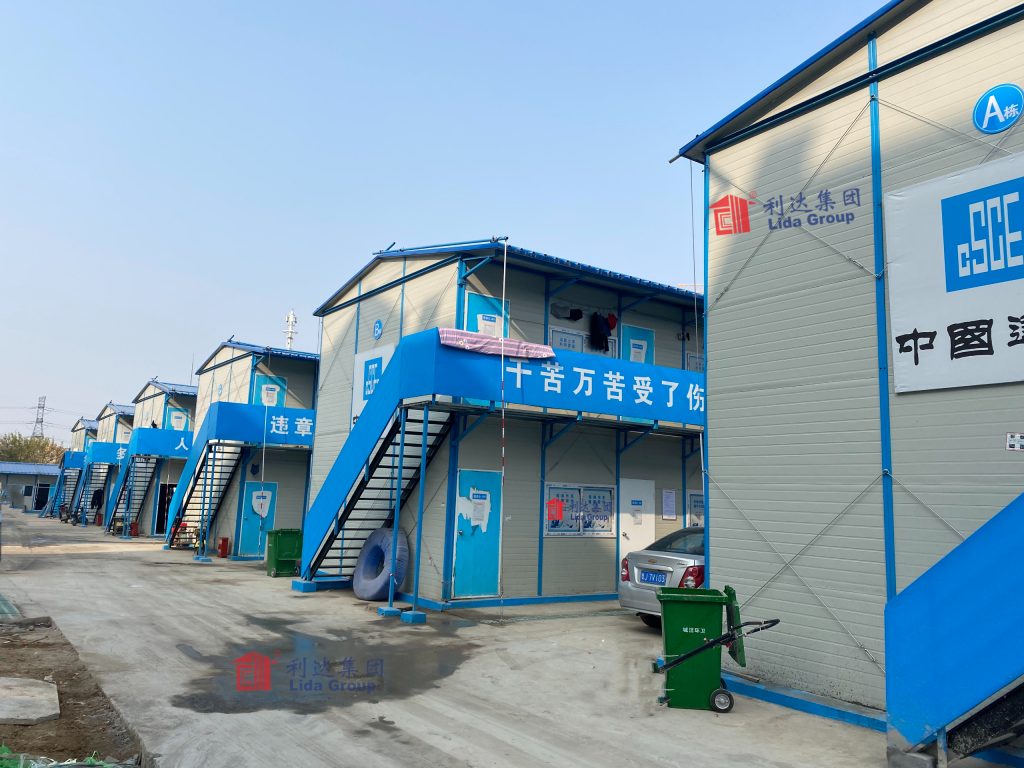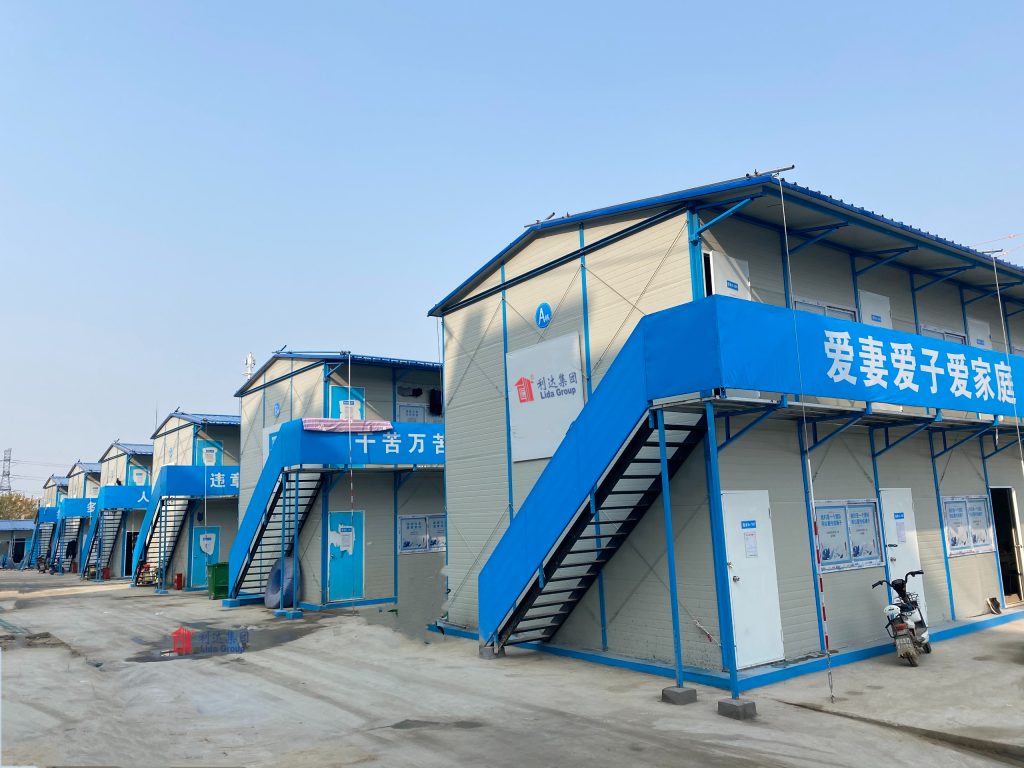Introduction: The Rise of Eco-Friendly Prefab Building Options
In the rapidly evolving landscape of modern construction, the demand for sustainable and efficient building solutions has never been higher. Traditional construction methods, while reliable, are increasingly scrutinized for their significant environmental impacts, including high carbon emissions, excessive consumption of non-renewable resources, and substantial waste generation. In response to these challenges, eco-friendly prefab buildings have emerged as a promising alternative. These structures offer a range of benefits that address both environmental concerns and practical needs.
Eco-friendly prefab buildings are designed with sustainability at their core. They utilize advanced materials and innovative manufacturing techniques to minimize environmental impact throughout the construction process. For instance, many prefab homes are built using recycled or recyclable materials, reducing the reliance on virgin resources. Additionally, these buildings often incorporate energy-efficient systems, such as solar panels and rainwater harvesting mechanisms, which further reduce their ecological footprint.
One of the most compelling advantages of prefab buildings is their efficiency in terms of time and cost. Unlike traditional construction projects, which can be plagued by delays due to weather conditions or logistical issues, prefab homes are fabricated off-site under controlled conditions. This not only accelerates the construction timeline but also ensures consistent quality. Moreover, the streamlined assembly process significantly reduces labor costs and minimizes disruptions to the surrounding environment.
Lida Group, a leader in this sector, exemplifies the potential of eco-friendly prefab buildings. Their Sandwich Panel Houses showcase how modular design principles can create homes that are both environmentally friendly and highly versatile. These structures use sandwich panels composed of insulating cores sandwiched between two sturdy outer layers, providing excellent thermal insulation, soundproofing, and structural integrity. This design ensures comfortable living conditions while minimizing energy consumption, thereby offering a sustainable solution to housing needs.
The adaptability of Lida Group’s offerings is another key factor contributing to their success. Sandwich Panel Houses can be customized to fit specific requirements, whether for residential, commercial, or community purposes. This flexibility allows users to tailor their spaces according to individual preferences and functional needs, making these buildings suitable for various applications. Furthermore, the ease of assembly and disassembly means these homes can be relocated without compromising comfort or functionality, opening up new possibilities for temporary or mobile housing solutions.
In conclusion, the emergence of eco-friendly prefab buildings represents a significant shift in the construction industry. With companies like Lida Group leading the charge, these innovative solutions combine sustainability, efficiency, and adaptability to meet the diverse demands of today’s world. As society continues to prioritize environmental stewardship, the adoption of such technologies will play a crucial role in shaping more resilient and sustainable urban landscapes.
Technological Innovations Behind Sandwich Panel Houses
At the heart of Lida Group’s pioneering approach to eco-friendly prefab buildings lies its sophisticated sandwich panel technology. Each sandwich panel consists of three primary components: an insulating core sandwiched between two durable exterior layers. This unique configuration offers unparalleled performance in terms of thermal insulation, structural integrity, and overall energy efficiency. The insulating core, typically made from materials such as polyurethane foam or mineral wool, provides exceptional resistance to heat transfer, ensuring that indoor temperatures remain stable regardless of external conditions. Meanwhile, the exterior layers, usually comprised of steel sheets or other robust materials, offer strength and durability, protecting the structure from environmental factors and wear and tear.
The development of these sandwich panels involved extensive research and innovation. Engineers and material scientists collaborated to identify the optimal combination of materials that would deliver maximum performance while adhering to stringent environmental standards. Advanced manufacturing processes were employed to ensure precision and consistency in the production of each panel. Automated machinery and computer-aided design (CAD) software enabled the creation of panels with exact specifications, enhancing both the quality and reliability of the final product.
One notable aspect of Lida Group’s technological advancements is the integration of smart building features within the sandwich panels. For example, some panels incorporate sensors that monitor temperature, humidity, and air quality, allowing for real-time adjustments to maintain optimal living conditions. These sensors can be linked to automated HVAC systems, ensuring energy-efficient climate control. Additionally, certain models include photovoltaic cells integrated into the outer layers, enabling the panels to generate renewable energy directly from sunlight. This dual-purpose functionality not only enhances the building’s sustainability but also reduces long-term operational costs.
Another critical component of Lida Group’s innovation strategy is the focus on modularity and scalability. Sandwich Panel Houses are designed to be easily assembled and disassembled, facilitating quick deployment and relocation. This modularity extends beyond the physical structure to encompass customizable interior layouts and add-on features. Users can choose from a variety of configurations to suit their specific needs, whether it be expanding living space, adding extra rooms, or incorporating specialized facilities such as offices or workshops.
Furthermore, the company places a strong emphasis on sustainability throughout the entire lifecycle of its products. From sourcing raw materials to end-of-life disposal, every step is carefully considered to minimize environmental impact. Recycled content is used wherever possible, and all components are designed for easy recycling or reuse. This commitment to circular economy principles ensures that Lida Group’s products contribute positively to global efforts toward resource conservation and waste reduction.
In summary, the technological innovations behind Lida Group’s Sandwich Panel Houses represent a remarkable advancement in the field of eco-friendly prefab buildings. By leveraging cutting-edge materials and manufacturing techniques, the company has created structures that offer superior performance in multiple areas, including thermal insulation, structural integrity, and energy efficiency. The integration of smart building features and a focus on modularity further enhance the versatility and sustainability of these homes, positioning them as a leading solution in the quest for greener, more adaptable living spaces.
Market Position and Competitive Advantages of Lida Group
In the burgeoning market of eco-friendly prefab buildings, Lida Group has established itself as a dominant player through its unwavering commitment to innovation and sustainability. The company’s comprehensive portfolio of products includes not only Sandwich Panel Houses but also a wide array of prefabricated structures tailored to various applications, such as commercial complexes, educational institutions, and healthcare facilities. This broad range of offerings enables Lida Group to cater to diverse customer segments, addressing the unique needs and preferences of different markets.
One of the key competitive advantages of Lida Group is its ability to provide turnkey solutions. From initial design consultations to final installation and maintenance, the company handles every stage of the project. This full-service approach ensures seamless execution and minimizes the complexities often associated with construction projects. Clients benefit from a single point of contact, simplifying communication and coordination. Additionally, Lida Group’s extensive experience and expertise enable it to navigate regulatory hurdles and local building codes efficiently, streamlining the approval process and accelerating project timelines.
Another significant advantage is the company’s relentless pursuit of technological advancements. Continuous investment in research and development allows Lida Group to stay ahead of industry trends and incorporate the latest innovations into its products. For instance, the integration of smart building technologies into Sandwich Panel Houses enhances user experience and operational efficiency. Features such as automated climate control systems, energy management tools, and integrated security solutions make these structures not only environmentally friendly but also highly functional and convenient.
Moreover, Lida Group’s dedication to sustainability sets it apart from competitors. The company prioritizes the use of eco-friendly materials and practices across all stages of production and operation. From utilizing recycled content in the fabrication of sandwich panels to implementing waste reduction strategies during construction, Lida Group strives to minimize its environmental footprint. This commitment resonates strongly with consumers who are increasingly seeking green alternatives and sustainable living options.
Customer satisfaction is another cornerstone of Lida Group’s success. The company places great emphasis on delivering high-quality products and exceptional service. Feedback mechanisms are in place to gather insights and continuously improve upon existing offerings. Positive testimonials and repeat business attest to the trust and loyalty customers place in Lida Group. Furthermore, the company’s proactive approach to addressing client concerns and providing ongoing support reinforces its reputation for reliability and excellence.
Lida Group’s competitive edge is further bolstered by its strategic partnerships and collaborations. By forming alliances with industry leaders, suppliers, and research institutions, the company gains access to cutting-edge knowledge and resources. These partnerships facilitate the exchange of ideas and foster innovation, driving continuous improvement in product design and performance. Additionally, collaborative efforts help expand Lida Group’s reach into new markets and geographies, broadening its customer base and reinforcing its market leadership.
In summary, Lida Group’s market position is underpinned by a combination of innovative product offerings, comprehensive service capabilities, and a steadfast commitment to sustainability. Its ability to provide turnkey solutions, integrate advanced technologies, and prioritize customer satisfaction distinguishes it from competitors. Through strategic partnerships and a forward-thinking approach to innovation, Lida Group remains well-positioned to lead the market in eco-friendly prefab building options, setting new benchmarks for the industry.
Applications and Use Cases of Sandwich Panel Houses
Sandwich Panel Houses have demonstrated remarkable versatility and adaptability across a wide range of applications, serving various sectors and meeting diverse needs. One of the most prominent uses of these structures is in residential settings, where they offer a blend of comfort, sustainability, and cost-effectiveness. Families looking for affordable yet durable homes find Sandwich Panel Houses appealing due to their rapid construction times and customizable designs. These homes can be configured to include essential amenities such as kitchens, bathrooms, and living areas, ensuring a fully functional living space that meets modern lifestyle expectations.
In the commercial sector, Sandwich Panel Houses are increasingly adopted for office spaces and retail outlets. Businesses appreciate the flexibility and speed with which these structures can be erected, allowing them to quickly establish operations in new locations. Modular office spaces equipped with necessary infrastructure, such as power, water, and internet connectivity, provide a conducive environment for productivity. Retail establishments benefit from the ease of customization, enabling businesses to create inviting storefronts and interiors that align with their brand identity. The adaptability of these structures also makes them ideal for pop-up shops and seasonal stores, catering to short-term business needs.
Educational institutions are another key area where Sandwich Panel Houses have found utility. Schools, colleges, and universities often require additional classrooms, administrative offices, or dormitories to accommodate growing student populations. Sandwich Panel Houses serve as an effective solution, offering quick setup and minimal disruption to ongoing academic activities. These structures can be designed to meet specific educational requirements, incorporating features such as soundproof walls, adjustable lighting, and integrated technology systems. Furthermore, the ease of expansion and reconfiguration allows educational facilities to scale their infrastructure as needed, ensuring they remain responsive to evolving needs.
Healthcare is another sector benefiting from the use of Sandwich Panel Houses. Hospitals and clinics frequently face the challenge of expanding services to meet rising patient demands. Prefabricated medical facilities provide a viable option for creating additional examination rooms, laboratories, and patient wards. These structures adhere to stringent health and safety standards, ensuring a sterile and secure environment for both patients and healthcare professionals. The modular nature of Sandwich Panel Houses also facilitates the rapid deployment of emergency shelters and temporary hospitals during crises, such as natural disasters or pandemics, demonstrating their value in providing timely medical care.
Disaster relief efforts highlight another critical application of Sandwich Panel Houses. When natural calamities strike, there is an urgent need for safe and secure shelters to house displaced individuals. Sandwich Panel Houses can be swiftly transported to affected areas and assembled on-site, providing immediate refuge. Their robust construction withstands harsh environmental conditions, ensuring the safety and well-being of occupants. Additionally, these structures can be equipped with basic utilities, such as electricity and sanitation facilities, improving the quality of life for those affected by disasters.
Remote and rural communities also benefit from the use of Sandwich Panel Houses. Areas lacking access to conventional building materials and skilled labor can leverage these prefabricated structures to construct essential facilities, such as schools, clinics, and community centers. The ease of transportation and installation makes it feasible to build in remote locations, promoting social and economic development. Moreover, the sustainability features of Sandwich Panel Houses, including energy-efficient systems and the use of eco-friendly materials, align with the environmental goals of these communities.
In summary, Sandwich Panel Houses exhibit exceptional versatility and adaptability across multiple sectors, from residential and commercial applications to educational, healthcare, disaster relief, and remote community settings. Their modular design, combined with advanced features and sustainable attributes, positions them as a valuable solution for addressing diverse needs. Whether providing comfortable homes, functional workspaces, or critical infrastructure, Sandwich Panel Houses continue to demonstrate their capability to meet the ever-evolving demands of contemporary society.
Environmental Benefits of Sandwich Panel Houses
Sandwich Panel Houses stand out not only for their versatility and adaptability but also for their significant environmental benefits. At the forefront of these advantages is the substantial reduction in carbon emissions achieved through their use. Traditional construction methods are notorious for their high carbon footprints, primarily due to the intensive use of fossil fuels during the manufacturing and transportation of building materials, as well as the energy-intensive processes involved in on-site construction. In contrast, the prefabrication process utilized by Lida Group significantly lowers greenhouse gas emissions. By fabricating panels in controlled factory environments, the company minimizes waste and optimizes resource usage, resulting in a more efficient and less polluting construction process.
Another key environmental benefit of Sandwich Panel Houses is their low waste generation. The precise manufacturing techniques employed ensure that materials are used efficiently, with minimal surplus or scrap. This contrasts sharply with traditional construction sites, where excess materials often end up in landfills. Additionally, the modular design of these houses allows for easy disassembly and reconfiguration, enabling components to be reused or repurposed rather than discarded. This contributes to a circular economy model, where resources are kept in use for as long as possible, thus reducing overall waste.
Energy efficiency is another hallmark of Sandwich Panel Houses. The sandwich panels used in these constructions feature high-performance insulating cores that provide superior thermal insulation. This results in reduced heating and cooling requirements, leading to lower energy consumption. Buildings constructed with these panels maintain stable indoor temperatures, even in extreme weather conditions, thereby decreasing the reliance on artificial climate control systems. The integration of renewable energy sources, such as solar panels, further enhances the energy efficiency of these homes. Photovoltaic cells embedded in the outer layers of the panels can harness solar energy, providing a sustainable and clean power supply.
Water conservation is also a critical consideration in the design of Sandwich Panel Houses. Many models incorporate rainwater harvesting systems, which collect and store rainwater for later use. This harvested water can be utilized for various non-potable purposes, such as irrigation and toilet flushing, reducing the demand on municipal water supplies. Additionally, efficient plumbing fixtures and greywater recycling systems can be integrated into these homes, further promoting water conservation.
Beyond these direct environmental benefits, Sandwich Panel Houses contribute to broader sustainability goals by promoting the use of eco-friendly materials. Lida Group prioritizes the use of recycled and recyclable materials in the construction of these homes, minimizing the depletion of natural resources. Materials such as recycled steel and reclaimed wood are commonly used, reducing the need for virgin resources and lowering the overall environmental impact. Furthermore, the company’s commitment to sustainable practices extends to the end-of-life phase of its products. Sandwich Panel Houses are designed for easy dismantling and recycling, ensuring that materials can be recovered and reused, thus closing the loop in the lifecycle of these structures.
In summary, Sandwich Panel Houses offer a multitude of environmental benefits, from reducing carbon emissions and waste generation to enhancing energy and water efficiency. Their innovative design and use of sustainable materials make them a standout choice for those seeking eco-friendly construction options. By embracing these technologies, individuals and organizations can contribute to mitigating environmental challenges and fostering a more sustainable future.
Economic Benefits of Sandwich Panel Houses
The economic advantages of Sandwich Panel Houses extend far beyond their environmental credentials, offering substantial financial benefits for both developers and residents. One of the most significant economic benefits is the reduction in construction costs. The prefabrication process employed by Lida Group ensures that building materials are used more efficiently, minimizing waste and optimizing resource allocation. This leads to lower material costs compared to traditional construction methods, where excess materials often result in unnecessary expenses. Additionally, the streamlined assembly process reduces labor costs, as fewer workers are required to complete the construction within a shorter timeframe. The rapid deployment of Sandwich Panel Houses also translates to quicker occupancy, allowing residents or businesses to start generating income sooner.
Operational savings are another crucial economic advantage. The superior thermal insulation provided by the sandwich panels significantly reduces heating and cooling costs. Efficient climate control systems, coupled with renewable energy sources such as solar panels, further decrease energy bills. This long-term reduction in utility expenses can result in considerable savings over the lifespan of the building. Water conservation measures, including rainwater harvesting and greywater recycling systems, also contribute to lower utility costs, particularly in regions where water scarcity is a concern.
Maintenance costs are generally lower for Sandwich Panel Houses due to the durability and longevity of the materials used. Sandwich panels are resistant to corrosion, moisture, and pests, reducing the need for frequent repairs and replacements. Regular maintenance tasks, such as painting or roof repairs, are minimized, translating to sustained savings over time. The modular design of these structures also simplifies repair and upgrade processes, as individual components can be easily replaced or modified without affecting the entire building.
From a developer’s perspective, Sandwich Panel Houses offer several financial incentives. The ability to construct buildings quickly and efficiently means that projects can be completed faster, reducing financing costs associated with prolonged construction periods. Faster turnaround times also mean that properties can be brought to market sooner, increasing revenue streams. Moreover, the versatility of these structures allows developers to cater to a wider range of market demands, from affordable housing to luxury residences, maximizing profitability.
For residents, the affordability of Sandwich Panel Houses is a significant draw. Lower initial construction costs translate to more accessible pricing, making these homes an attractive option for first-time buyers and budget-conscious families. The potential for customization and scalability ensures that these homes can grow alongside the needs of their occupants, providing a flexible and cost-effective solution for long-term living.
Additionally, the economic benefits of Sandwich Panel Houses extend to job creation and local economies. The growth of the prefab building industry stimulates employment opportunities across various sectors, from manufacturing and logistics to construction and installation. Local communities benefit from increased economic activity, as the construction and operation of these buildings generate jobs and stimulate demand for related goods and services.
In summary, Sandwich Panel Houses offer numerous economic benefits, including reduced construction and operational costs, lower maintenance expenses, and increased financial accessibility for both developers and residents. Their efficient design and sustainable features contribute to long-term savings and enhanced profitability, making them a compelling choice in the modern construction landscape.
Customer Testimonials and Case Studies
The widespread adoption and positive reception of Sandwich Panel Houses are best illustrated through the experiences of satisfied customers. Numerous testimonials and case studies highlight the transformative impact of these innovative structures on various aspects of people’s lives. One such story comes from a family in a suburban neighborhood who opted for a Sandwich Panel House to address their growing housing needs. Initially skeptical about the concept of prefabricated homes, they were pleasantly surprised by the quality and comfort of their new residence. “We were amazed at how quickly our home was built and how seamlessly it blended with our existing property,” remarked one resident. The family appreciated the customizability of the design, allowing them to incorporate personalized features that aligned with their lifestyle preferences.
In another case, a small business owner chose a Sandwich Panel House to establish a new office space. Faced with tight deadlines and limited budgets, the entrepreneur found the prefab solution ideal for launching their venture. “The speed and efficiency of the construction process allowed us to open our doors much earlier than anticipated,” noted the business owner. The modular design proved advantageous when the company expanded, as additional units could be easily added to accommodate the growing team. This flexibility not only supported business growth but also minimized disruptions to daily operations.
Educational institutions have also benefited from the adoption of Sandwich Panel Houses. A rural school district struggling with overcrowded classrooms turned to these structures for a swift and effective solution. “The new classrooms provided much-needed relief and improved the learning environment for our students,” said a school administrator. The rapid deployment and ease of installation ensured minimal disruption to the academic calendar, allowing the school to continue functioning smoothly. Furthermore, the sustainable features of the Sandwich Panel Houses resonated with the community’s values, promoting environmental awareness among students and staff.
Healthcare providers have similarly embraced the benefits of Sandwich Panel Houses. During a recent public health crisis, a hospital urgently required additional isolation units to manage an influx of patients. Sandwich Panel Houses were deployed to create temporary wards that met stringent medical standards. “These structures played a critical role in our response efforts, providing safe and efficient care to those in need,” explained a hospital official. The robust construction and adaptability of the panels ensured that the temporary facilities could be set up quickly and safely, enhancing the hospital’s capacity to deliver timely medical assistance.
Community centers have also experienced the advantages of Sandwich Panel Houses. A local nonprofit organization sought to build a multipurpose facility for community events and programs. “The Sandwich Panel House provided us with a versatile space that we could customize to fit our diverse programming needs,” shared the center’s director. The ease of assembly and the ability to modify the layout as needed made it an ideal solution for hosting a variety of activities, from workshops and meetings to recreational events.
These testimonials and case studies underscore the practical and transformative impact of Sandwich Panel Houses. Whether providing comfortable homes, functional workspaces, additional classroom capacity, temporary medical facilities, or community gathering places, these structures consistently deliver on their promise of efficiency, sustainability, and adaptability. They not only meet the immediate needs of users but also enhance the quality of life and promote resilience in various sectors, reinforcing their status as a leading solution in the realm of eco-friendly prefab buildings.
Conclusion and Future Prospects
In conclusion, the rise of eco-friendly prefab buildings, particularly those offered by Lida Group, marks a significant milestone in the evolution of sustainable construction practices. Sandwich Panel Houses epitomize the perfect blend of environmental responsibility, economic viability, and functional versatility. These structures not only address pressing environmental concerns through reduced carbon emissions, waste generation, and enhanced energy efficiency but also offer substantial economic benefits, including lower construction and operational costs, reduced maintenance expenses, and greater financial accessibility. The successful implementation across various sectors—from residential and commercial to educational, healthcare, and disaster relief—underscores their adaptability and effectiveness in meeting diverse needs.
Looking ahead, the future prospects for eco-friendly prefab buildings appear exceptionally promising. Technological advancements will likely drive further improvements in materials science and manufacturing processes, enhancing the performance and sustainability of these structures. Innovations such as smarter building technologies, more efficient energy systems, and advanced recycling methods will continue to push the boundaries of what is achievable. Moreover, the growing global awareness of environmental issues and the increasing demand for sustainable living solutions suggest a fertile ground for the expansion of these technologies.
As society moves towards more resilient and sustainable urban landscapes, the role of companies like Lida Group will become increasingly pivotal. Their commitment to innovation, sustainability, and customer satisfaction positions them to lead the way in shaping the future of construction. By continuing to invest in research and development, forging strategic partnerships, and responding to emerging market needs, Lida Group and similar pioneers will undoubtedly play a crucial role in advancing the cause of eco-friendly prefab buildings. Ultimately, these efforts will contribute to creating a more sustainable and harmonious relationship between humanity and the planet, ensuring a brighter and greener future for generations to come.
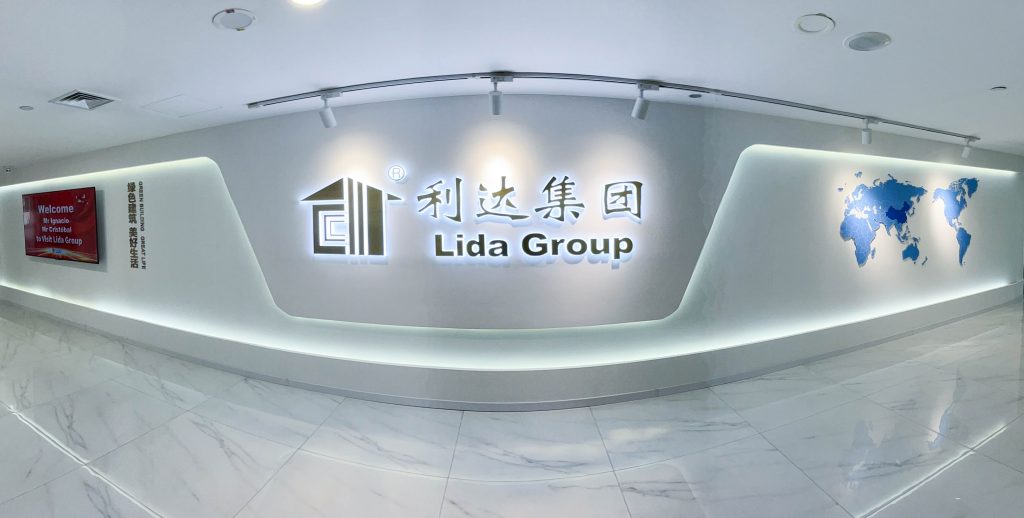
Related news
-
Discover How Lida Group's Sandwich Panel Houses Are Revolutionizing the Concept of Movable Accommodation
2025-02-14 17:02:28
-
New Prefab Building Technology by Lida Group Enhances Flexibility of Movable Accommodation in Urban Areas
2025-02-14 15:55:24
-
Lida Group Innovates with Sustainable Sandwich Panel Houses for Rapid Movable Accommodation Solutions Worldwide
2025-02-13 11:55:50
contact us
- Tel: +86-532-88966982
- Whatsapp: +86-13793209022
- E-mail: sales@lidajituan.com


